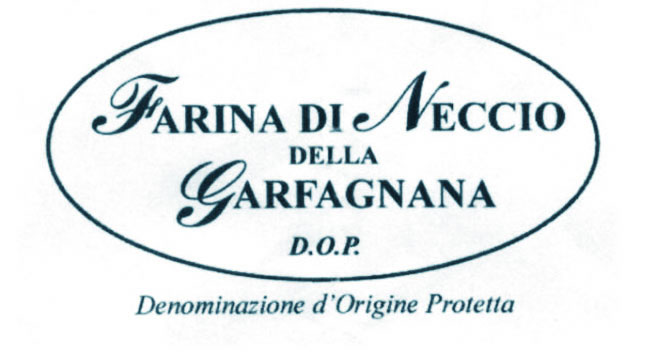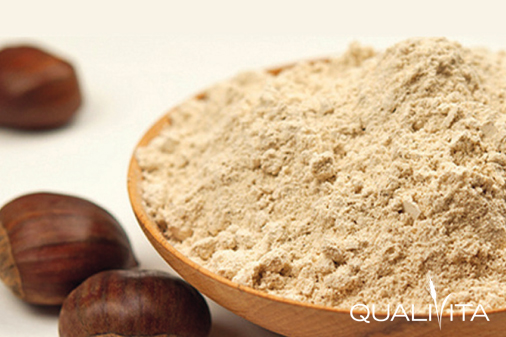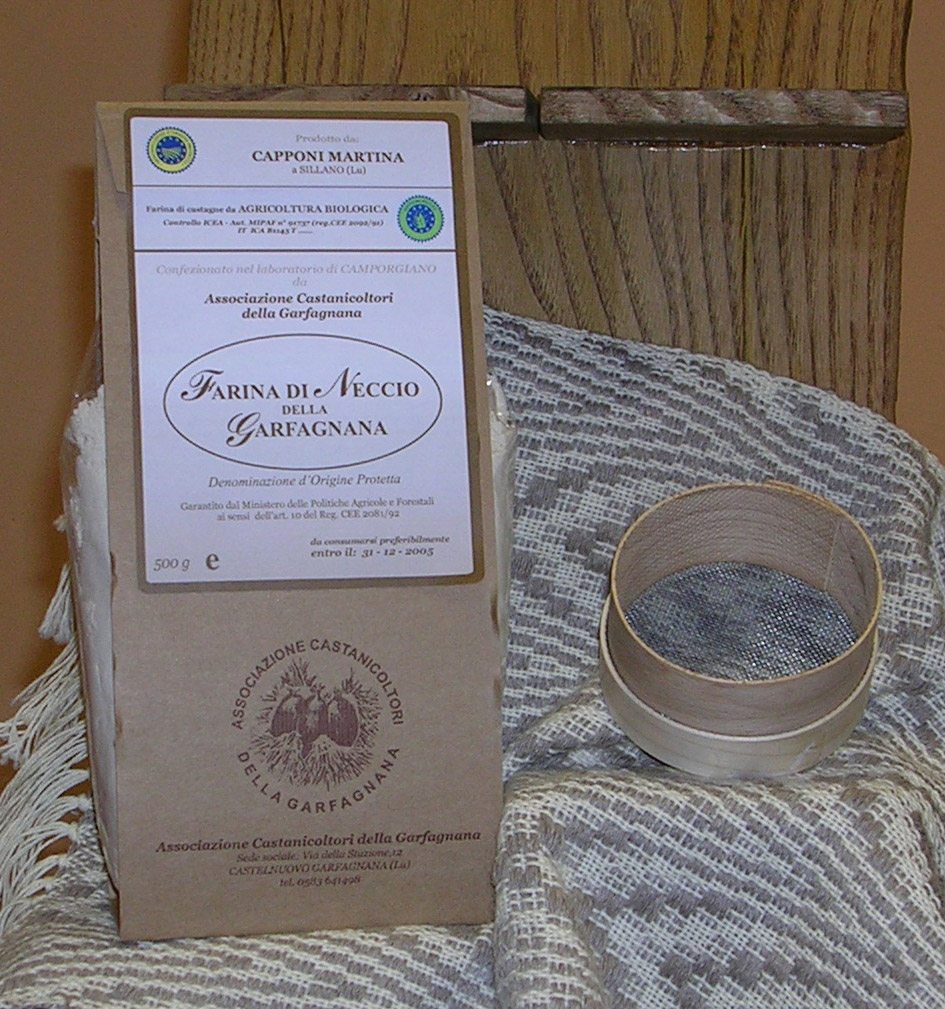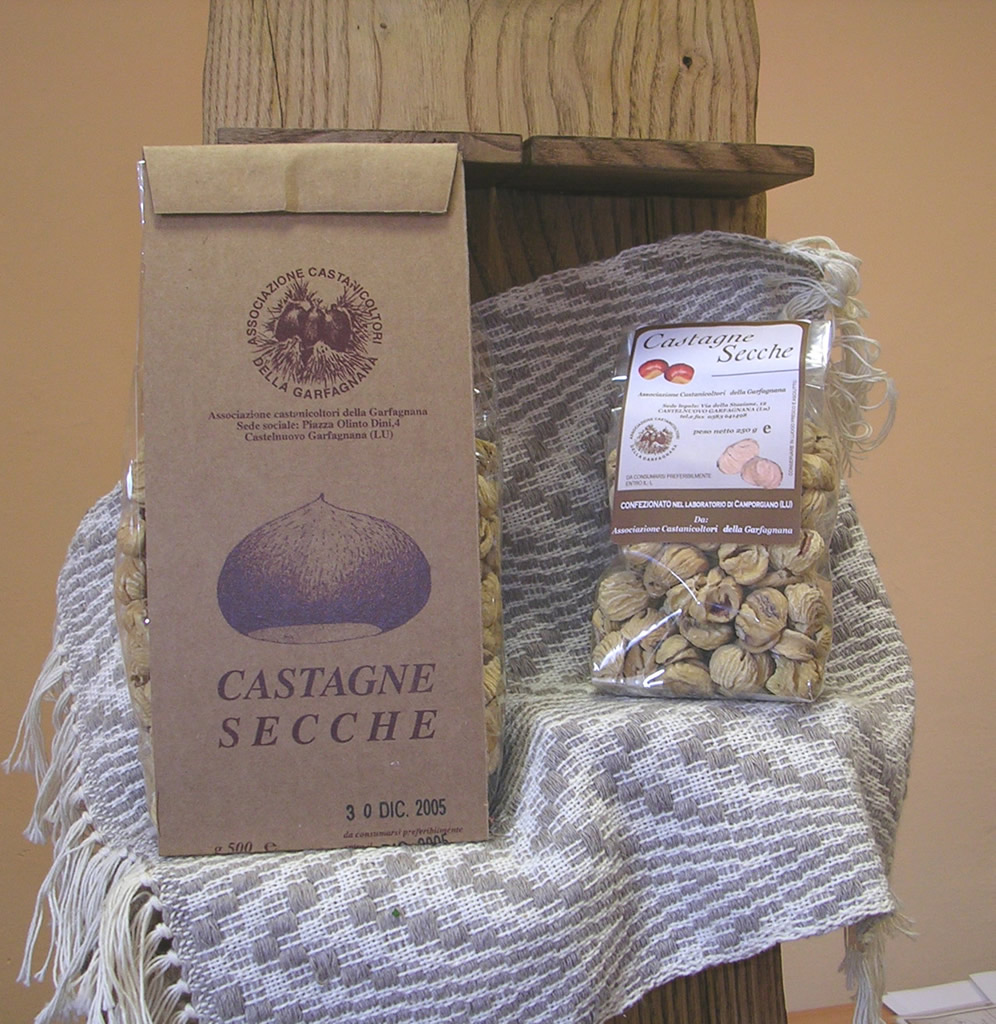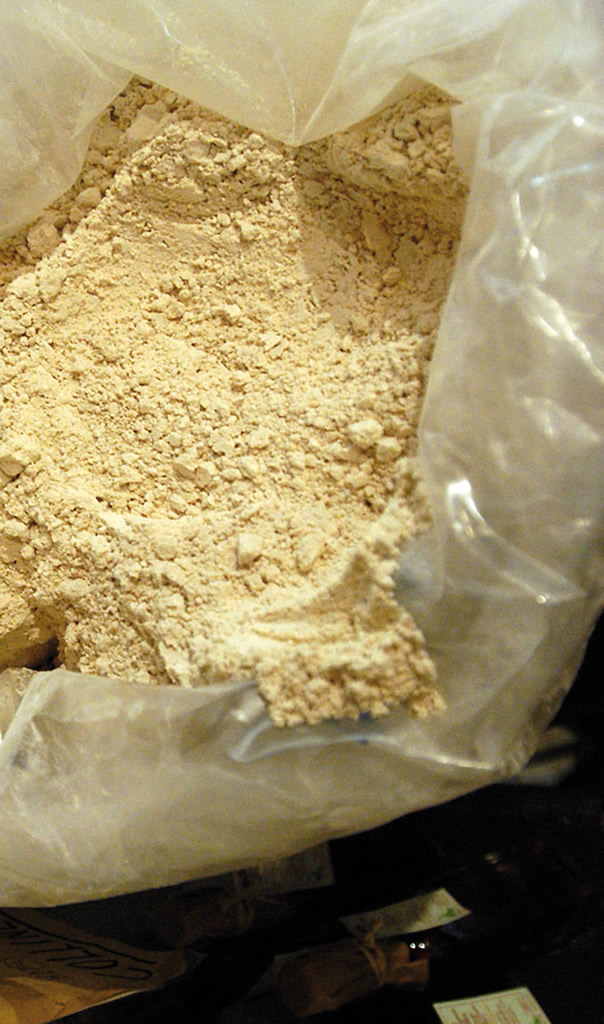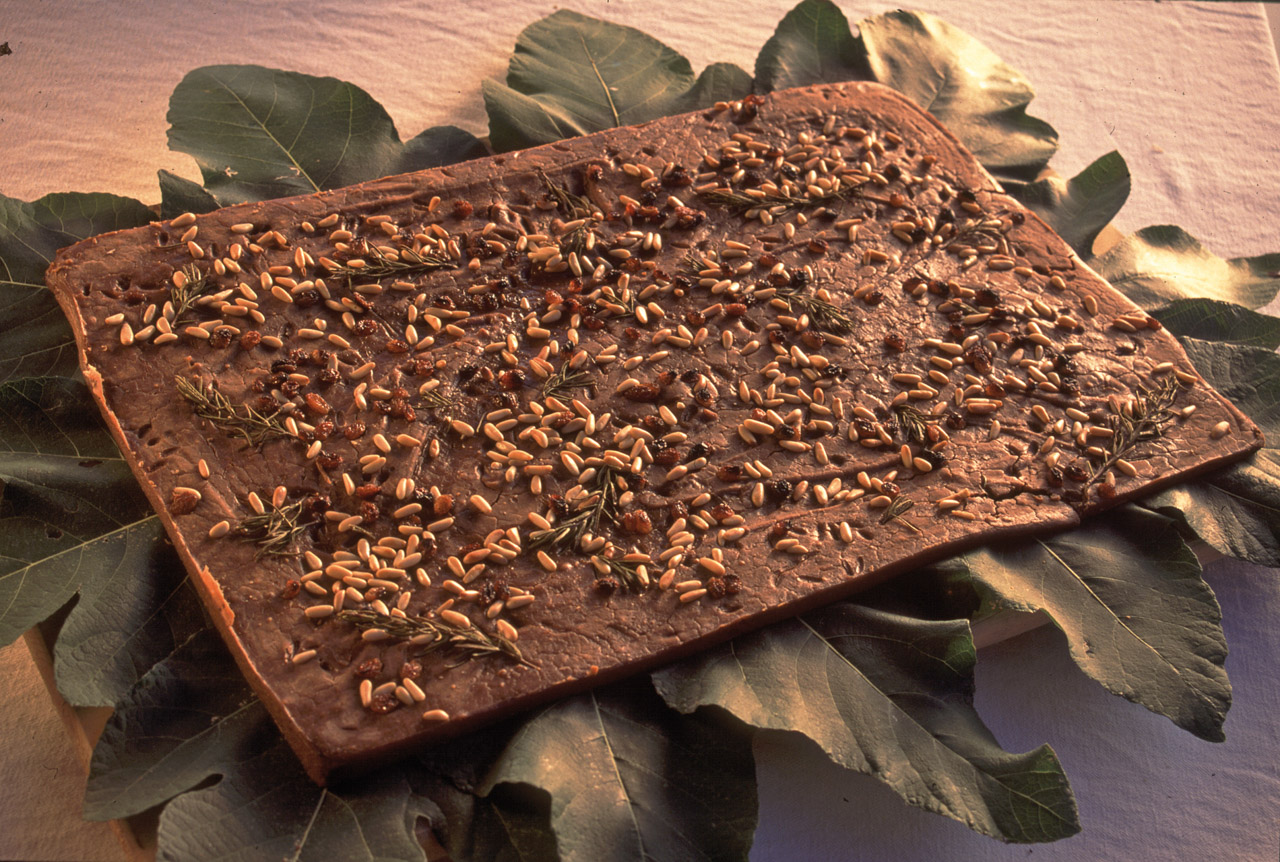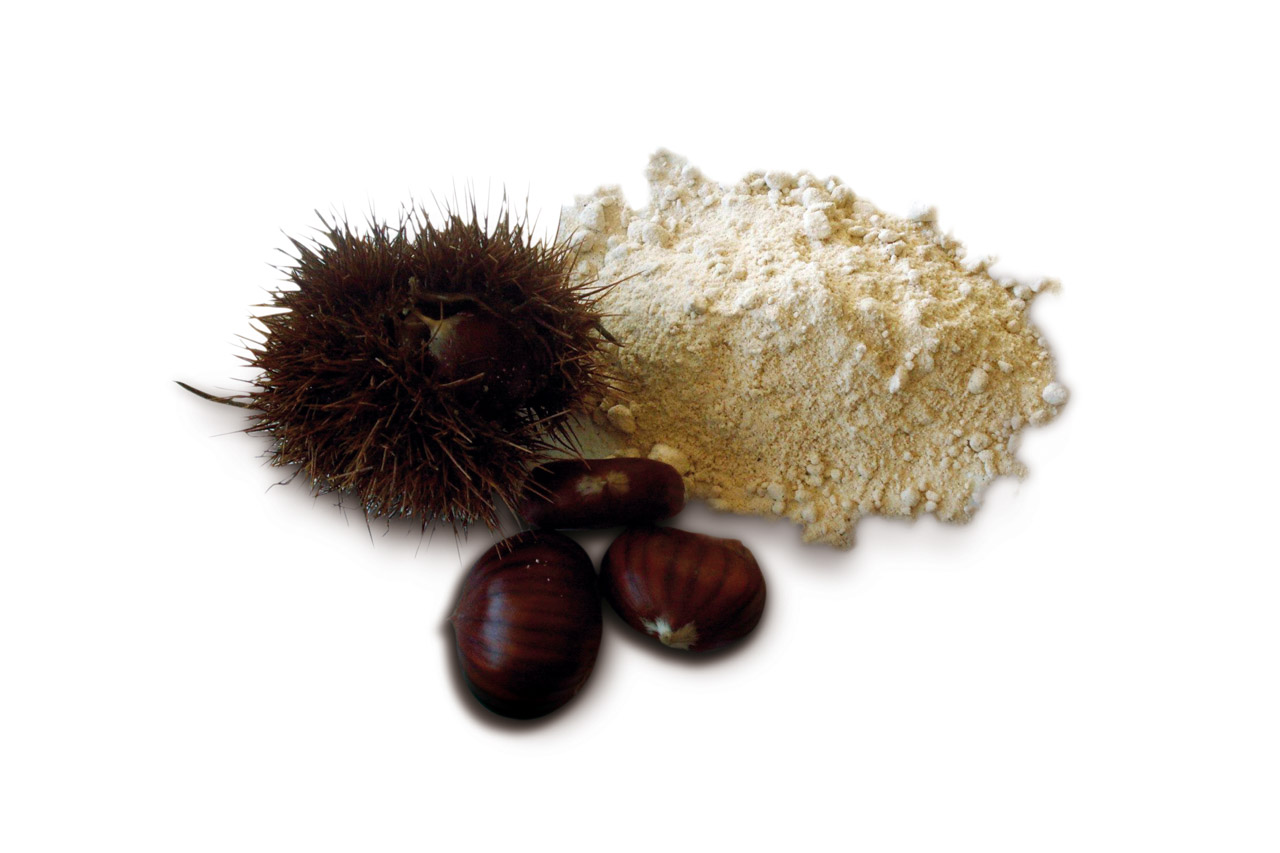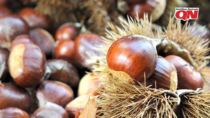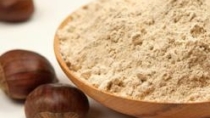Description
Farina di Neccio della Garfagnana PDO refers to flour obtained from the grinding of dry chestnuts belonging to the species Castanea sativa M., deriving from the Carpinese, Pontecosi, Mazzangaia, Pelosora, Rossola, Verdola, Nerona Capannacia varieties and other local varieties.
Production Area
The production area of Farina di Neccio della Garfagnana PDO is within the territory of 20 municipalities in the Province of Lucca, in the Tuscany region.
Production Method
The chestnuts are generally harvested in October and November. Once picked, the chestnuts are dried slowly in traditional structures known as metati, over fires fuelled with chestnut wood. The fruit are arranged in layers of between 20 cm and 90 cm, so as to allow the steam to evaporate without creating stagnation within the structure. After about 40 days the chestnuts are shelled with traditional beating machines, ventilated either by a machine or with the use of traditional techniques. The fruit are then polished by hand to get rid of any impurities. Mills with stone grinders are used to transform the chestnuts into flour, with a limit of 500 kg of chestnuts per day, so as to avoid the overheating of the high speed grinders.
Appearance and Flavour
Farina di Neccio della Garfagnana PDO ranges from pure white to dark ivory in colour and has a fine consistency. The sweet flavour is characterised by a slightly bitter aftertaste and it has a typically chestnut aroma.
History
Neccio (a dialectal term that indicates the chestnut and its derivatives) flour has been a staple food for the populations of Garfagnana for many centuries. Chestnut tree cultivation began in around the year 1000, following a demographic boom in the area which led to the cultivation of vast uncultivated areas; this is when the chestnut began being referred to as the "bread tree". In the second half of the 14th century, the municipality of Barga started issuing strict regulations for the harvesting and exportation of chestnuts, also imposing a duty on Neccio flour. Subsequently, at the end of the 15th century, Barga also adopted a specific law to protect the chestnut trees and the flour obtained from them. The administration of the city of Lucca also enacted a specific law to protect chestnut and Neccio flour in 1489, demonstrating the importance of these products for the local populations. Since then, the production of chestnut flour has become increasingly more rooted in the area.
Gastronomy
Farina di Neccio della Garfagnana PDO should be stored in a cool, dry place. It is used to make many traditional delicacies, such as manafregoli (chestnut flour cooked with milk), castagnaccio (oven-baked cake made with chestnut flour, oil, nuts, pine nuts), and Neccio (Garafagnana bread). It can also be used to make polenta, traditionally served with ricotta, mild cheese, sautéed mushrooms and charcuterie. Many bakeries now use the flour to make rustic, traditional cakes.
Marketing
The product is marketed as Farina di Neccio della Garfagnana PDO. It is sold in sealed multi-layered bags made of food-grade recyclable or compostable materials, with a square-bottom, with a brown paper outer layer in the shade of Pantone brown No. 4026 C. There are packets weighing 12 kg for the product destined for industrial use, which are generally divided into two sealed transparent sacks.
Distinctive Features
Farina di Neccio della Garfagnana PDO owes its distinctive characteristics to the use of metati, a unique chestnut desiccator on two levels made of stone, lime and sand, as well as stone grinding mills.



